 Inner Sanctum
Inner Sanctum

The largest photo book ever published on Việt Nam’s slipper orchids – often called Venus slipper, and botanically named Paphiopedilum vietnamense, orchids with blooms shaped like slippers – has just been released by collector Chu Xuân Cảnh. After 12 years of searching, he has collected all 34 species of slipper orchids native to Việt Nam. Việt Nam News reporter Lê Hương talks with Cảnh about his passion.
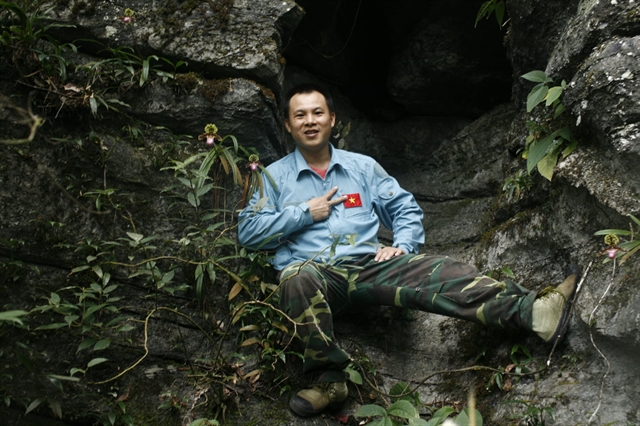 |
| Orchid collector Chu Xuân Cảnh. Photos courtesy of Cảnh |
Could you tell us about your passion for orchids?
I’ve been passionate about orchids since I was in secondary school. Over the years, that interest developed into a deep love, especially for Việt Nam’s native species. While I appreciate all kinds of orchids, I’m particularly drawn to slipper orchids because of their distinctive shapes, varieties and the experience of finding them in nature. Slipper orchids in Việt Nam are quite diverse, with 34 species divided into two genera.
I’ve had the rare opportunity to see all species in the wild, which took me 12 years. That journey has been a blend of scientific exploration, personal obsession and conservation work.
I currently work for Fauna & Flora International, managing a conservation project focused on the endangered snub-nosed monkey in Hà Giang. While my job focuses on animal conservation, it allows me to spend a lot of time in natural forest ecosystems, where I also observe and study plant life.
Being in the field and discovering these orchids in their natural habitat gives me great joy and emotional satisfaction. For me, it’s more than a hobby - it’s a lifelong commitment.
What makes slipper orchids so unique?
Slipper orchids are notable for their slipper-shaped flowers, which are both beautiful and biologically fascinating. Việt Nam has a particularly rich diversity, with 23 native species and 11 natural hybrids. This makes Việt Nam one of the most important countries for slipper orchid biodiversity.
Some of these orchid species are endemic to Việt Nam, meaning they exist nowhere else in the world. Many Vietnamese slipper orchids have been used as parent species in global orchid hybridisation, which has drawn significant attention from international researchers and collectors.
Not all slipper orchids are fragrant, but some are. What makes them stand out is the incredible diversity in their flower sizes, shapes and colours. Compared to other orchid types, slipper orchids are often described as “beautiful but without fragrance” but that’s only partially true. Some species do carry a lovely scent.
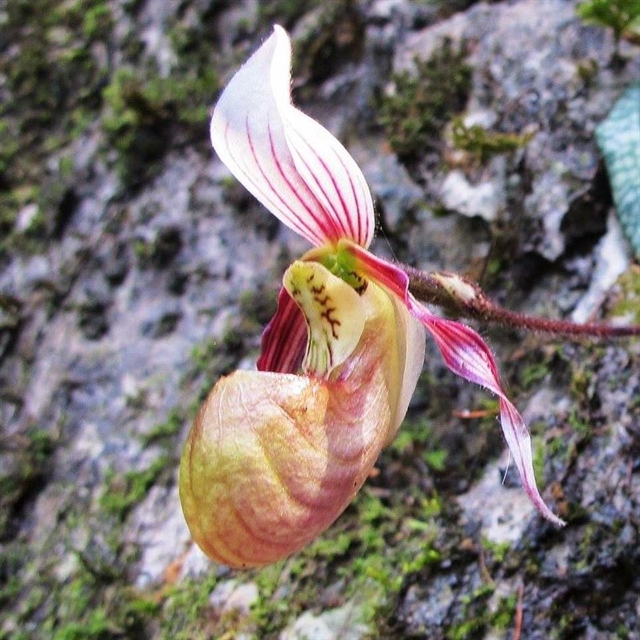 |
| Xuân Cảnh Slipper Orchid in the wild. |
Can you tell us more about the Xuân Cảnh slipper orchid that you discovered?
Yes, this was a very meaningful discovery for me. In 2009, I came across a species I had never seen before, and in 2010, it was officially recognised and published in a US scientific journal as a new species, named Paphiopedilum xuan-canhii. It is one of the smallest slipper orchid species ever recorded in Việt Nam, with a compact size in both the leaves and the flowers.
This discovery was especially significant because it was the last native slipper orchid found in Việt Nam. Most of the others were discovered between 1998 and 2000. At that time, Việt Nam was opening up to more scientific exploration, and many researchers started documenting new species.
I’ve long advocated that newly discovered Vietnamese orchids should carry Vietnamese names, whether they’re named after people or places. Historically, many native and even endemic orchids were named by foreign scientists and given non-Vietnamese names. I wanted to change that, and I’ve worked with researchers to support this idea. Although I’ve found multiple new species, the Xuân Cảnh orchid is the only one I’ve named after myself. The rest bear the names of localities.
When publishing the new species, I refused to reveal the exact location coordinates. This was a deliberate decision, as many previously discovered orchid sites were heavily exploited after their locations were made public.
I wanted to ensure that this species could survive in the wild. Some sceptics suggested it might be a hybrid, but I provided extensive field documentation, including photos and videos, to confirm that it was a naturally occurring wild species.
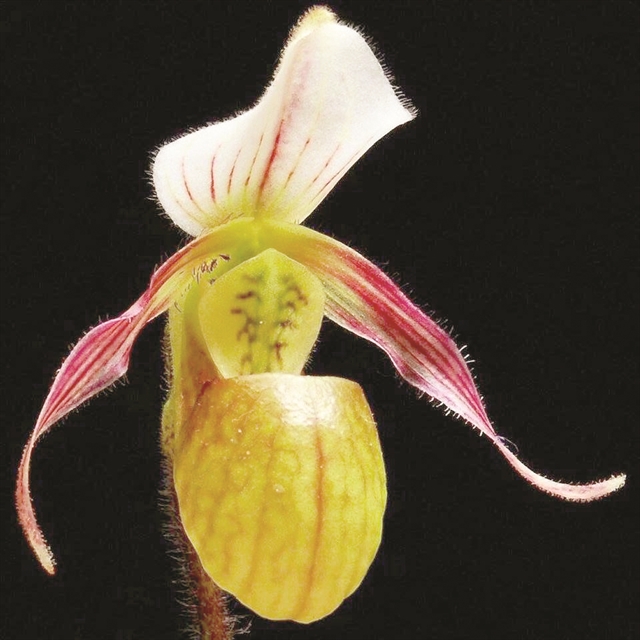 |
| Xuân Cảnh Slipper Orchid is very small in size. |
What are some memorable moments from your field trips?
There have been many, both thrilling and dangerous. Over the past 20 years, I’ve travelled across Việt Nam documenting orchids in their natural habitats. I’ve had close calls: broken cameras, dangerous falls and encounters with venomous snakes. Thankfully, I’ve always taken precautions, so I’ve never been bitten.
Sometimes, I pushed myself to complete day trips that involved 10 hours of hiking and climbing, which left me physically exhausted. In very remote areas, I had to camp in the forest overnight just to reach an orchid site the next morning.
One moment I’ll never forget was during a mountain climb. I grabbed onto a large rock, thinking it was stable, but as I pulled myself up, the entire rock came loose and flipped towards me. I quickly shoved it aside and rolled my body away just in time.
Another time, I spotted a flower growing deep inside a cliff crevice. To see it up close, I crawled out along a ledge. When I looked down, I saw it was a steep drop - it made my legs shake. Those moments reminded me how risky this work can be.
Despite the dangers, the joy of seeing orchids in the wild is unmatched. When I’m surrounded by nature and come across one of these beautiful plants, all the effort feels worth it. It’s hard to describe, but there’s a deep sense of fulfilment that comes with following your passion.
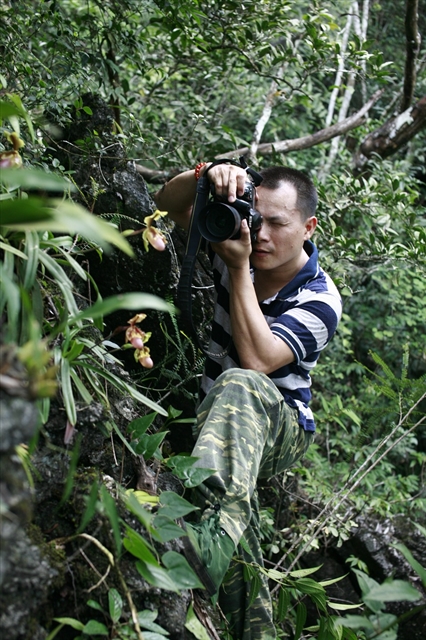 |
| Chu Xuân Cảnh works in the jungle. |
How did you create your English-Vietnamese photo book?
Throughout my 12-year search for all slipper orchid species, I kept detailed records of each one I encountered - documenting altitude, light requirements, habitat type and more. I also took a large number of photographs.
After years of collecting data, I realised I had something unique and valuable. That’s when I decided to compile everything into a book. The photo selection alone took a long time. In the end, I chose over 1,000 images that best represented each species.
The result is a 500-page book that weighs around 2.5 kilograms - the largest photographic publication ever made about Việt Nam’s slipper orchids. It’s not only a visual record but also a scientific and conservation-focused work.
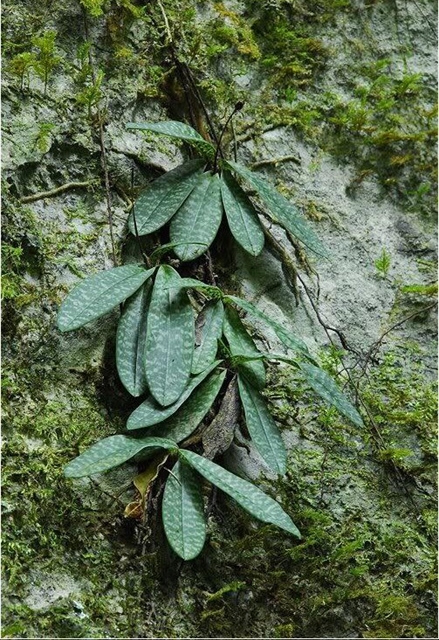 |
| Xuân Cảnh Slipper Orchid in its habitat on high mountain. |
What is the current state of slipper orchid conservation in Việt Nam?
The situation is concerning. Many species in the wild are being over-harvested, and if this continues, some could become extinct. That’s why I’ve taken action. For years, I’ve been reintroducing orchids back into their natural habitats. In the past, I even bought orchids being sold on the streets or in local markets and replanted them in forests.
Now, I’m moving towards a more sustainable method - propagation through seeds in lab environments. This way, I can grow seedlings and eventually return them to the wild without disturbing existing populations.
The Vietnamese Orchid Association was only founded recently, so it’s still in its early stages. A lot of work lies ahead, but I’m committed to supporting conservation efforts and working alongside government agencies and other stakeholders to protect and preserve Việt Nam’s native orchid species. VNS




